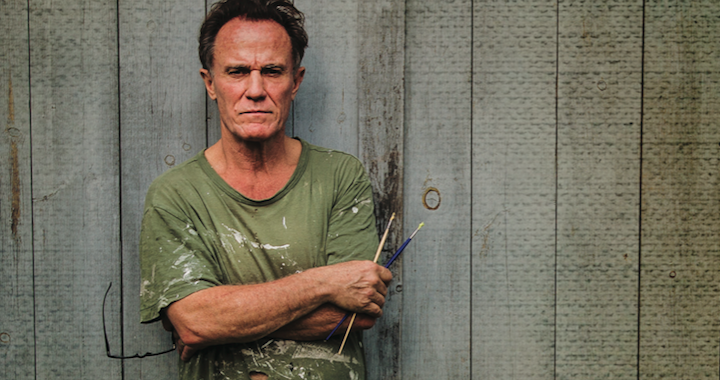The war on traditional notions of narrative, order and beauty has failed. Representational, story-driven movies are embraced by most people, rather than the installation and performance art favored by big galleries and institutions like Tate Modern. The Whitney Biennial (an exhibition of contemporary American art) is often dispiriting to all but a few critics, curators and art students. (Why do curators write longer and longer explanations of the art in their shows in direct proportion to less and less content, craft or expertise?) Badly made conceptual dreck, crafted by committee in a “process” is mostly just boring.
American television is in the midst of a golden age of classical, even Shakespearean story-driven, hands-on, writer-centric, tradition-connected creativity despite the best efforts of the now-irrelevant deconstructionist literary theorists of the 1960s and 1970s. Shows likeBreaking Bad and House of Cards explore “old fashioned” classical themes of good and evil to wild global popular acclaim. Wasn’t moral argument through theater supposed to have ended with the absurdist theater of Surrealism and Dadaism? Did Jean Genet, Jean Tardieu and Samuel Beckett strive in vain?
Most people seem to vote with their feet, ears and eyes for spirituality-laden aesthetic traditions that, like the Dude, abide. Video games are increasingly representational. Furthermore, the “rebellious young” are reviving representational art through their ubiquitous tattoos!
And what of the almost spiritual sense of mission that characterizes the entrepreneurs in Silicon Valley startups? Correctly viewing themselves as liberators, our science-based geeks have invented terms fraught with spiritual overtones. We now send our books, our music and even our memories into a cloud. We may or may not believe in God but we do once again believe in meaningful consciousness residing outside of ourselves.
Spirituality is overtaking commerce while commerce looks more and more like art—the kind of art the Medici or Irving Penn, Homer or Miles Davis would have understood in which artist and observer comprehend one another, even respect each other and speak a common language. More young people (and a few old ones like me) binge/stream made-for-TV programs like Netflix’s traditionally crafted Shakespeare-inspired House of Cards or the brilliant Australian show (one of my favorites) Rake, than will visit the Tate Modern or Whitney in a year.
Maybe the future no longer belongs to the anti-meaning ideologues. Shakespeare is produced tens of thousands of times more often than the absurdist plays. Miles Davis lasted, John Cage didn’t. Duchamp’s “original” urinal got lost and had to be replaced by one crafted by a ceramic artist. The museum wanted to keep their investment in a piece of art that was meant to mock the art market! The “found object” became the made investment. Hirst’s reputation is rotting along with his sharks. Daniel Dennett has a following but even his followers behave as if their lives have a deeper meaning than plant life, no matter what he says to the contrary. And modern delivery systems are bypassing the critics and gatekeepers. Who needs another rotting shark in a tank of formaldehyde or a hank of cloth hung from the Whitney’s ceiling as a “statement” of something or other when you can watchQI (Quite Interesting) the wonderful British comedy quiz show on YouTube for free? It’s hosted by Stephen Fry, a greatly talented defender of good writing and music. (Who would have guessed his musical hero is Wagner?)
A new generation is embracing human connection rather than debunking it. The liberating results are real. The geeks (bless them) are killing off the jaded cold-hearted gatekeepers. When I was a young artist in the 1970s I had to travel to a gallery, slides in sweaty hand, and beg for a meeting with the owner if I wanted to sell a painting. If the owner loved my work, I’d be invited back and a year or two later he or she would put a few paintings in a show. (I wandered off into the movie business and quit painting.) When I resumed painting in 2006, I worked for eight years until I liked my work enough to show it. I started a website in 2014 and now sell art directly to collectors. There are no gatekeepers in sight. It’s just me directly in touch with people who like my work.
The same goes for my writing. I am about to self-published my new book Why I Am an Atheist Who Believes in God. Given the bestselling status of some of my previous books, several of my former secular publishers and several religious publishers were interested in publishing it. However they wanted me to craft this book to fit their marketing strategies. “Does it go on the New Atheist or the Religion shelf?” they asked. “Can you rewrite it to fit one or the other market?
My answer was no. Yet you may read the book I wrote.
I don’t view you as a market segment. I view you as my partner, an individual reader, a friend as complex and maybe even as conflicted, as I am. Why should either of us “fit” anywhere?
My liberators in Silicon Valley have freed me to write for you directly on Patheos.com and in my self-published new book to say what I want to say to anyone I want to say it to. The Internet and its innovators are doing more to facilitate the reemergence of content-laden, craft-rich, hands-on art, individuality and perhaps even spirituality, than all the galleries, agents, critics, churches and publishers combined.
Frank Schaeffer’s new book WHY I AM AN ATHEIST WHO BELIEVES IN GOD How to Create Beauty, Give Love and Find Peace is now available in paperback!

